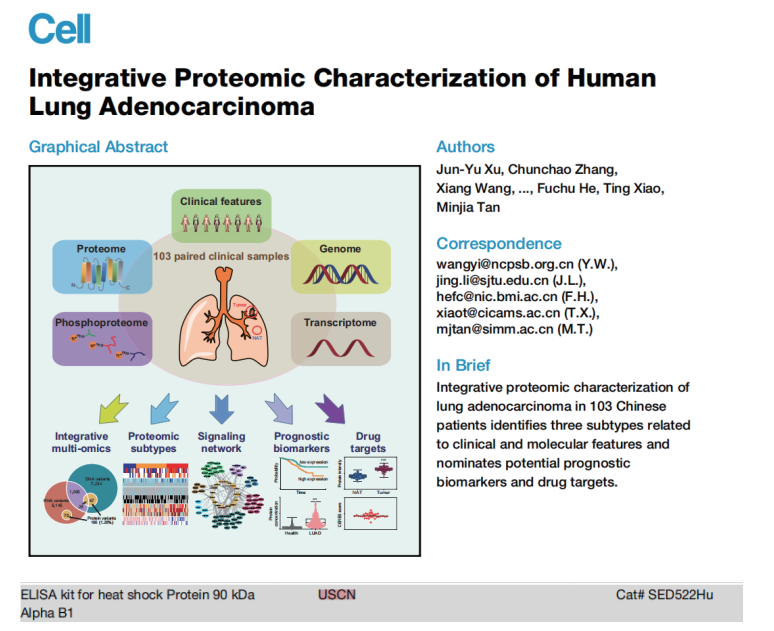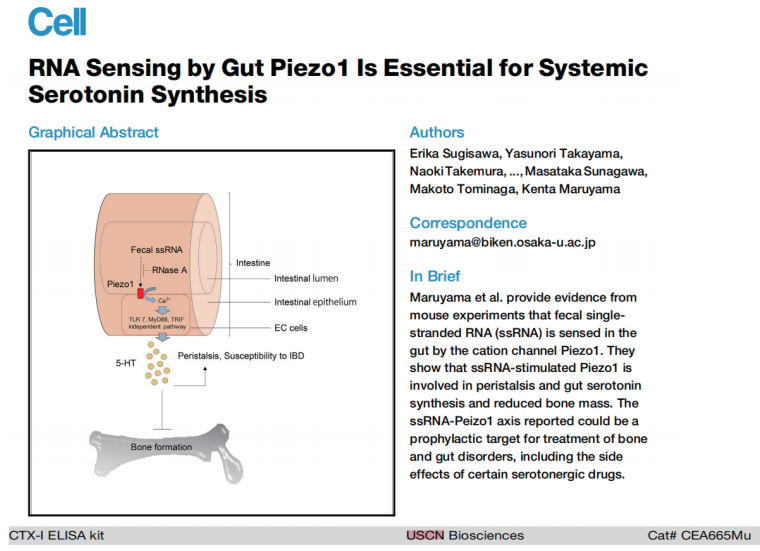Congratulations to professor Minjia Tan and professor Kenta Maruyama for publishing their paper on Cell.
On July 9, 2020, professor Minjia Tan from State Key Laboratory of Shanghai Institute of Materia Medica published a paper titled Integrative Proteomic Characterization of Human Lung Adenocarcinoma on Cell.

Genomic studies of lung adenocarcinoma (LUAD) have advanced our understanding of the disease’s biology and accelerated targeted therapy. However, the proteomic characteristics of LUAD remain poorly understood. We carried out a comprehensive proteomics analysis of 103 cases of LUAD in Chinese patients. Integrative analysis of proteome, phosphoproteome, transcriptome, and whole-exome sequencing data revealed cancer-associated characteristics, such as tumor-associated protein variants, distinct proteomics features, and clinical outcomes in patients at an early stage or with EGFR and TP53 mutations. Proteomebased stratifififification of LUAD revealed three subtypes (S-I, S-II, and S-III) related to difffferent clinical and molecular features. Further, we nominated potential drug targets and validated the plasma protein level of HSP 90b as a potential prognostic biomarker for LUAD in an independent cohort. Our integrative proteomics analysis enables a more comprehensive understanding of the molecular landscape of LUAD and offffers an opportunity for more precise diagnosis and treatment. The ELISA kit (HSP90aB1, SED522Hu) of Cloud-Clone brand was chosed to determine the concentation of HSP90aB1 in this article, we are so proud for supporting the reaserchers.
On July 7, 2020, professor Kenta Maruyama from WPI Immunology Frontier Research Center (IFReC) published a paper titled RNA Sensing by Gut Piezo1 Is Essential for Systemic Serotonin Synthesis on Cell.

Gastrointestinal enterochromaffiffiffififin cells regulate bone and gut homeostasis via serotonin (5-hydroxytryptamine [5-HT]) production. A recent report suggested that gut microbes regulate 5-HT levels; however, the precise underlying molecular mechanisms are unexplored. Here, we reveal that the cation channel Piezo1 in the gut acts as a sensor of single-stranded RNA(ssRNA) governing 5-HT production. Intestinal epithelium-specifififific deletion of mouse Piezo1 profoundly disturbed gut peristalsis, impeded experimental colitis, and suppressed serum 5-HT levels. Because of systemic 5-HT defififificiency, conditional knockout of Piezo1 increased bone formation. Notably, fecal ssRNA was identifififified as a natural Piezo1 ligand, and ssRNA-stimulated 5-HT synthesis from the gut was evoked in a MyD88/TRIF-independent manner. Colonic infusion of RNase A suppressed gut motility and increased bone mass. These fifififindings suggest gut ssRNA as a master determinant of systemic 5-HT levels, indicating the ssRNA-Peizo1 axis as a potential prophylactic target for treatment of bone and gut disorders. The ELISA kit (CTXI, CEA665Mu) of Cloud-Clone brand was chosed to determine the concentation of CTXI in this article, we are so proud for supporting the reaserchers.

